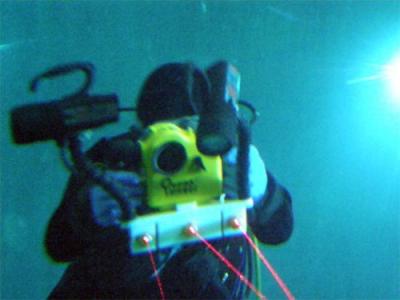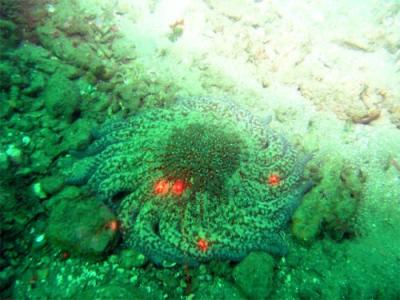The SCINI team divers practiced their diving, coring, and photography skills in the murky waters of Monterey Bay on August 23rd. One of the student experiments we will be doing in Antarctica relates to the image quality of the invertebrates that the SCINI ROV and divers with cameras can take underwater.
 The lasers are attached below the camera
The lasers are attached below the camera
SCINI diver showing how the lasers at the base of the camera work.
The beams of the two lasers on the right will cross when they are one meter away from the camera lens. And at one meter (3.25 feet) distance, the two parallel beams (the two outer beams) will be exactly 20 centimeters (almost 8 inches) apart.
Can you tell how large this starfish is?
 Pycnopodia helianthoides
Pycnopodia helianthoides
Pycnopodia helianthoides getting laser tagged!
The two closest together laser spots show that the starfish (Pycnopodia helianthoides) is almost a meter away from the camera. So the distance between those two dots and the single dot to the right of them is about 20 cm. The starfish, even with its curled arms, is over 30 cm (12 inches) in diameter. The extra two dots near the bottom are reflections. (It is very tricky getting clear pictures underwater.)
Have you ever held a starfish that large? How many arms can you count? These many-armed starfish are called sunstars. And they can get even BIGGER than this one!

